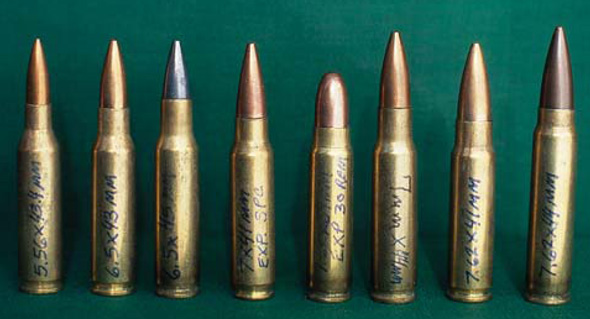

Wild Bill Shakespeare tells us that a rose by any other name would smell as sweet. Meaning, I guess, that the names of things aren’t as important as their essence.
Ha! Try telling that to cartridge manufacturers. Quantum physics is a game of Candyland compared to figuring out our American “system” of cartridge names. It wasn’t always so bad. Before the era of self-contained metallic cartridges, life was sunny and shooters hadn’t a care in the world.
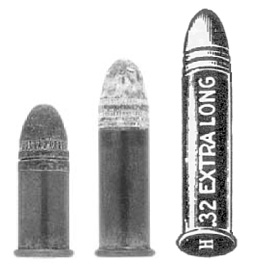
After all, if you knew the approximate caliber of your rifle, all you had to do was to dump a palmful of blackpowder down the bore, stuff in a spit-patched ball or conical bullet, cap ‘er up, and let fly. Life was simpler then. The sky was crusted o’er with bluebirds. Dan’l Boone wore a big toothy smile, and injuns grinned and waved as he shot them.
Things were almost as straightforward when the combustible paper cartridge briefly superseded loose powder and shot during the Civil War. Used in guns such as the Sharps carbines and infantry rifles, the combustible cartridge was nothing more than a powder-stuffed paper tube tied to a bullet.
These paper rounds looked like scaled-down Dutch Masters panatelas and smelled almost as good when they burned. You distinguished one from another pretty much by pointing your finger and saying “this one” or “that one.” But they worked just fine, though they sometimes got wet, fell apart, or obstinately failed to combust.
But the paper cartridge was obsolete before it even got started. Years earlier, in the 1840’s, some anonymous European tinkerer had stuffed a .22 round ball into a percussion cap, and voila! the metallic cartridge was born. It was a monumental technological step forward, but before long the waters had become hopelessly muddy, especially in regard to distinguishing one cartridge from another. The only way to do that was with a name, and therein lay the rub.
Many of the earliest metallic rimfire cartridges, all of them by necessity blackpowder, bore honorific names indicating the inventor of the rifle for which they were chambered. These names were always informative but rarely memorable, to wit: .44 Henry Flat, .56 Spencer, .58 Miller. If you carried a Miller rifle, you needed a Miller cartridge, and that was that. You were safe as long as you could read a cartridge box.
Other early rimfires bore bland dimensional names that gave you a rough idea of their relative length and hence power: .32 Extra Short, .32 Short, .32 Long, .32 Long Rifle, .32 Extra Long. Some of these latter cartridges might have reached a length of several feet had the supply of adjectives held out. What these early names lacked in romance they made up for in meaning.
The .32 Extra Short, for example, was a .32-caliber cartridge that was, well, pretty damn short. The .32 Extra Long was pretty damn long. The .32 Long was just kinda average.
But such simple nomenclatural logic started falling apart in the mid-1860’s when bottlenecked cartridges were invented. Because many of the early lever-action repeaters were restricted to fairly short cartridges, the only ways to cram more powder behind a bullet were to blow out the case shoulder or squeeze down the case neck, both of which also improved headspacing and feeding.

Thus when Christopher M. Spencer necked down his original straight-cased .56 Spencer rimfire to .46, he thought it proper to call the new smallbore round the .56-.46 Spencer, combining both its names in the hyphenated style so common nowadays in chic yuppy marriages. The first number referred to the caliber of the original straight case; the second to that of the necked-down derivative case.
So far, so good. But Spencer soon realized that folks might confuse the .56-46 with his original .56, so he took to calling the earlier round the .56-.56 Spencer. This retroactive christening may have enlightened some shooters, but it left others looking in vain for a bottleneck that wasn’t there. To alleviate some of the mess he had created, Spencer helpfully referred to the .56-.46 cartridge as both the “#46” and the “46/100” in his catalogues. Good old #46.
Realizing that his supply of numerals was virtually inexhaustible, Kit Spencer fell victim to a mad frenzy of bottlenecking. Before the end of the decade, you could buy a Spencer rifle (the gun you “loaded on Sunday and shot all week”) in .56-.56 Spencer, .56-.52 Spencer, .56-.50 Spencer, or .56-.46 Spencer. And those were just the fifty-sixes! Within a few years, Spencer’s bottleneck fever had spread to a promising upstart, former shirt manufacturer Oliver Winchester, d/b/a Winchester Repeating Arms, Co.
Ever the innovator, Ollie Winchester modified B. Tyler Henry’s .44 Henry Flat rimfire into a centerfire in 1873, crimped on a tiny bottleneck, and gave the world the .44-40 Winchester (aka .44 WCF). He was just getting warmed up.
Flinging his cravat to the floor and hollering, “Don’t stop me, boys!” Winchester then bottlenecked the already-bottlenecked .44-40 even further, which resulted in the .38-40 Winchester (aka .38 WCF). Now shooters had to digest a new nomenclatural pattern quite unlike Spencer’s, one in which the first number (e.g., .44 or .38) referred to caliber and the second (e.g., 40) to the cartridge’s black powder charge expressed in grains.
Over the years, Winchester and his minions begat a brood of hyphenated cartridges (.40-65, .40-72, etc., etc., etc.) that still leaves us scratching our heads today. The last known outbreak of bottleneck fever ravaged New Haven, Connecticut, in 1882, leaving the .32-20 WCF and .25-20 WCF in its wake.
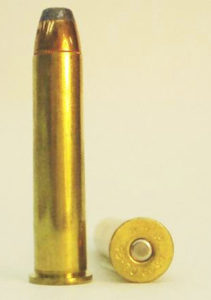
Confusing as they sometimes were, at least the old blackpowder cartridge designations meant something. They had to. Back in those days, you couldn’t just saddle up Ol’ Bo and gallop over the ridge to the nearest Wal-Mart when your rifle ran dry.
You had to handload your ammunition, pilgrim, and you better know how to do it. Many of the old blackpowder cartridge designations were really just cheat-sheets that told you how to put together a given load. The .45-70-405 Government cartridge of 1873, for example, combined a 405-gr. .45-caliber lead bullet with 70 grains of black powder.
The .45-90-405 was a longer version of the Government with an extra 20 grains of blackpowder. The massive .50-140-3-1/4 Sharps of 1880 threw together a .50-caliber bullet, a whopping 140 grains of blackpowder, and a 3-1/4”-long brass case. I assume you hired someone to fire it for you.
Things got a little gray in 1895 when the first American smokeless cartridges, the .30-30 and .25-35 WCF, hit the stores. Judging by name alone, you might think that these were old-formula blackpowder cartridges like the .44-40 and .38-40, but not so. The “-30” and “-35” represented the grain weight of the cartridges’ smokeless powder charges.
Not that the industry actually encouraged anyone to go out and reload the new smokeless cartridges. William T. Lyman, in his Ideal Handbook, implied that the new-fangled powder was only a little less touchy than nitroglycerin. Everybody was ignorant about the new “whitepowder,” as it was called in those early days, and cartridge manufacturers had nightmares about Farmer Brown over in Zanesville topping off a .30-30 case with Dupont smokeless shotgun powder and blowing his durn fool head clean off.
Anyway, the smallbore, fast-twist .30-30 and .25-35 rifles became hopelessly clogged with fouling if blackpowder was used in them, so Winchester hit on a happy idea that no doubt tickled Bill Lyman: the .32 Winchester Special of 1895. The .32 WS was a smokeless cartridge meant to be reloaded with blackpowder. It’s still a good deer cartridge, especially (as Frank Barnes says) “for those who don’t believe that smokeless powder is here to stay.”
In those waning days of the 19th century, two commandments governed the firearms industry:
I)Thou shalt not underbid a government contract.
II)Thou shalt not put a competitor’s name on thine own product.
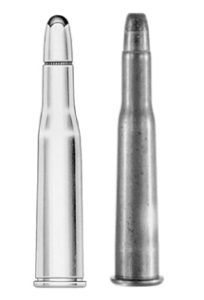
For this last reason, every successful new cartridge was viciously knocked-off by the competition, usually in slightly modified form to avoid charges of plagiarism.
For example, when the .25-35 Winchester of 1895 appeared to be enjoying healthy sales, Marlin jumped into the fray with their own version, the .25-36 Marlin. (That “-36” was supposed to fool everybody.) The Marlin round’s case dimensions differed enough from the Winchester’s that the two were not interchangeable, as some oafish shooters discovered when their rifles wouldn’t feed or eject properly.
Remington, which didn’t offer a lever-action design, had to sulk in its corner until 1906, when they introduced a rimless version of the .25-35 in their famous Model 8 autoloading rifle. The new Remington cartridge, called (surprise!) the .25-35 Remington—later the plain old .25 Remington–was one of three Remington rimless clones of well-established Winchester rimmed rounds, the other two being the .30-30 and .32 Remington. A fourth chambering, the .35 Remington, appears to have been original.
Sometimes fin-de-siecle smokeless cartridges were named to avoid confusion with existing blackpowder cartridges. We’ve seen that the .32 Winchester Special really was special, in a dumb kind of way, but ever wonder what’s so special about the .38 Special?
Today, it doesn’t seem very remarkable at all, but when it was introduced in 1898 it seemed, well, special when compared to the shorter, slower .38 S&W blackpowder round introduced in 1871. (To make matters worse, the .38 S&W itself later became known as both the .380 and the .38/200. Take your pick.)
Similarly, the .45 Colt cartridge of 1873 used to be called the .45 Long Colt, at least in non-military circles. The “Long” distinguished it from its “short” counterpart, the .45 Schofield, which was chambered in the huge S&W Army Model top-break revolver designed in part by Major George W. Schofield.
Later, the “Long” seemed a conversational necessity to avoid confusion with the shorter, smokeless .45 ACP, first chambered in a subdued form in the 1905 Colt Automatic Pistol, and the .45 Auto Rim, chambered in the no-nonsense 1917 Smith & Wesson and Colt army revolvers.
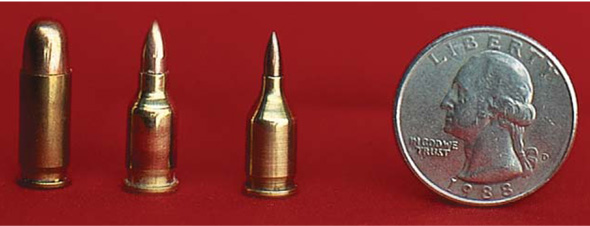
Flowing through this verbal muck was the curious convention that the term ”.45 Colt” always referred to a cartridge while “Colt .45” always referred to a gun. But which gun? The Colt 1873 Single Action Army, the Colt 1878 Double Action Revolver, the Colt 1917 Army revolver, or the Colt 1905 or 1911 automatic pistols?
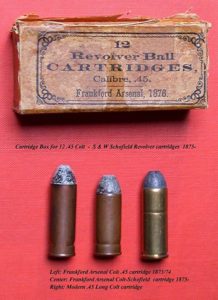
Such ambiguity could have caused endless confusion in the trenches of No Man’s Land: “Quick! The Hun’s coming over the top, private! Toss me that Colt .45! No, not that one—that one! No, not that one! That one! No, that one! Now throw me that box of .45 Colt. No, not that one–that one! No! Not that one, you idiot!—whoops!” It’s a wonder we’re not all speaking German, nicht wahr?
After the end of the first War to End All Wars, talented tinkerers began wildcatting existing rounds into cartridges offering superior performance or greater efficiency. With forgivable vanity, these ballistic cowboys often stamped their own names on their latest creations.
Today everyone has heard of the competent .25-06 Remington, but who remembers that it first saw the light of day in 1920 as the .25 Niedner, named after its inventor, A.O. “Pop” Niedner of Dowagiac, Michigan?
The ultra-modern .22-250 Remington first hit the stands way back in 1937 as the .22 Gebby Varminter© (note the copyright) after its inventor. Other contemporary wildcatters also affixed their names to wildcat versions of the Varminter’s parent case, the .22 Savage High Power, which was itself originally called the .22 Savage Imp for reasons which are no longer apparent.
Possibly to compete with the wildcatters, the major ammunition manufacturers toyed for an all-too-brief period in the ‘30’s with jazzy, art-deco names for their latest creations: .22 Hornet, .220 Swift, .219 Zipper, .218 Bee. The last great cartridge name of this sort was the .221 Remington Fireball (1967), chambered in the Remington XP-100 bolt-action pistol. None of these stylishly-named cartridges set any sales records, however, and manufacturers have since reverted to humdrum proprietary names such as the .416 Remington and .450 Marlin. Yawn.
Savage seems to have been something of an iconoclast when it came to naming new cartridges. One of the very few manufacturers to break the Second Commandment when it chambered its Model 1899 lever-action in .30-30 Winchester, Savage had a knack for giving its proprietary cartridges rather sexy names.
In addition to the High Power and the Imp, Savage was responsible for the .250-3000 Savage. This was not a .25-caliber case crammed with 3000 grains of powder (oh, don’t be silly) but an excellent .25 that blasted an 87-grain bullet out the spout at the unprecedented velocity of 3000 feet per second. Later, when velocity dropped below 3000 fps with a 100-grain bullet, Savage emasculated the name into the plain old .250 Savage.
Of course, if one name doesn’t work out, you can always try another. Case in point: the .244 /6mm Remington. When Remington introduced the .244 in 1956 to counter the .243 Winchester, they assumed that its primary use would be as a varmint cartridge in their slow-rifled Model 740 semi-auto rifle. Winchester, on the other hand, marketed the .243 as a combination varmint/medium game cartridge and rifled their guns with a slower 1:12 twist to stabilize the .243’s longer deer and antelope bullets. Voting with their wallets, the shooting public favored the .243 ten-to-one over the .244.
Calling time-out and going into a quick huddle, Remington decided to re-rifle the 740 for the more forgiving 1:12 twist. By that time, however, the .244 had gathered considerable unwanted PR baggage, so Remington decided to change the name of the cartridge to the 6mm Remington. The rest, as they say, is history.
Remington must have felt a bit of deja-vu in regard to their excellent .280 Remington. Twenty years after its 1959 introduction, Remington’s marketeers decided to capitalize on the 7mm craze by relabeling the .280 the 7mm Remington Express.

The wisdom of this strategy was no doubt incontrovertibly proved in reams of corporate memos and white papers. When sales of the Express began to smell bad, Remington wiped the egg from its face, did a few months’ penance, and reintroduced the Express as—ta da!—the .280 Remington. Which just goes to show that, as Emerson said, it’s funny how things work out sometimes.
Even the most dull-witted shooter, among whose ranks I occasionally number, realizes that a cartridge’s given caliber designation needn’t bear any relation to the actual diameter of its bullet.
The .357 Magnum is just a long .38 Special, which is pretty much a 9mm, which is actually a .356-caliber, which dimension is also applied—now, keep up with me here—to the .356 Winchester rifle cartridge, which uses the same size bullet as the .358 Winchester, the .35 Remington, the .350 Remington Magnum, and the .35 Whelen. But don’t you dare confuse any of these thirty-fives with the .351 Winchester Self-Loader, which was, surprisingly, actually a .351-caliber. Somebody in New Haven must have got himself fired for that one.
The .308 Winchester is considered a .30-caliber, as are the .30-30, the .300 Winchester Magnum, the .300 H&H, the .300 Weatherby Magnum, the .300 Savage, the .30 Carbine, the .30-40 Krag, the .30 Remington, the .30 Mauser, the .30 Luger—but also the .303 Savage, the .307 Winchester, the 7.5 French MAS (how did that get in there?), and of course the .32 ACP, which is also known as the 7.65–not to be confused with the 7.62, which is just another name for the .308 Winchester, which is where we started in the first place. If this makes sense, you may have a career in the ammunition industry.
Lately, in the pre-dawn hours when every paranoid fantasy seems not only plausible but imminent, I’ve been waking up in a clammy sweat, fresh from nightmares about hideous wildcats. The .50-140-3-1/4/.38-40 Sharps-Winchester. The .45-.45-.45/.38/.32 Colt & Wesson. The .58/.25 Henry Miller Gallager Spencer Sharps Winchester. The 7.65/7.62/7.5-.458 Necked-Up Magnum.
I’d chalk it up to indigestion if it weren’t so close to the truth.

Next Step: Get your FREE Printable Target Pack
Enhance your shooting precision with our 62 MOA Targets, perfect for rifles and handguns. Crafted in collaboration with Storm Tactical for accuracy and versatility.
Subscribe to the Gun Digest email newsletter and get your downloadable target pack sent straight to your inbox. Stay updated with the latest firearms info in the industry.

![Best Concealed Carry Guns In 2025 [Field Tested] Wilson Combat EDC X9S 1](https://gundigest.com/wp-content/uploads/Wilson-Combat-EDC-X9S-1-324x160.jpg)


![Best 9mm Carbine: Affordable PCCs [Tested] Ruger Carbine Shooting](https://gundigest.com/wp-content/uploads/Ruger-Carbine-Shooting-100x70.jpg)
![Best AR-15: Top Options Available Today [Field Tested] Harrington and Richardson PSA XM177E2 feature](https://gundigest.com/wp-content/uploads/Harrington-and-Richardson-PSA-XM177E2-feature-100x70.jpg)

Think I’ll “save” this for a later date. Like the next time I have a broken leg. Good fodder to divert the brain from the pain.
uhh…. Winchester’s .243 was 1in10 twist and the .244Rem was 1in 12. Rem had to speed up their twist to handle medium game bullets and they generally went to 1 in 9.125 for the 6mm. Winchester never changed theirs….
The only problem with the Euro way is that it’s still possible to have 2 cartridges with the designation, but different specs. For instance, a 243 win and a 243 Ackley Improved would both be a 6×51…..
The only sensible method of naming cartridges is the European method of listing bullet diameter followed by case length. Of course for lurid and sensational advertising the Americans are so fond of they could still add on names like 5.56 x 72mm super day dream wiz bang thunder flash.
5.56 x 72mm super day dream wiz bang thunder flash? Wow!!!!! Where can I git wunna them?!? Kin I uz ’em in me granddad’s ol’ thutty-thutty?
Then there are cartridges like the 30.06, named for the year they were invented, and the whole “magnum” two-cartridges-one-gun thing.
Good article.